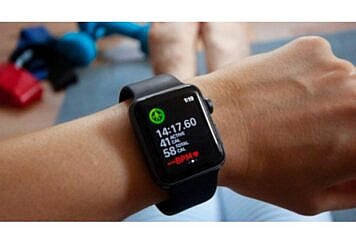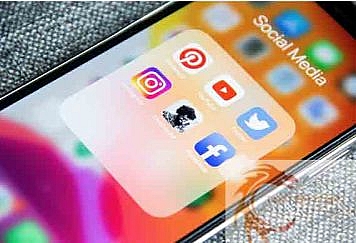Nowadays a website’s landing page is fundamental for a successful online presence. A landing page is the first page that visitors see when they click on a website’s link and it can make or break a user’s experience. Therefore it is essential to create an effective landing page that engages visitors and encourages them to take the desired action.
That is why we have consulted with Reactive Graphics, an award-winning web design London agency. With years of experience, Reactive Graphics is a trusted partner for businesses looking to create effective landing pages that deliver results. Their team stays up-to-date with the latest web design trends and practices to ensure that their client’s landing pages are optimized for conversions. In this post, we’ll discuss tips and best practices for creating an effective landing page that will boost your web design and conversions.
What is a landing page?
A landing page is a single web page created as a destination for a specific marketing or advertising campaign. It’s called a landing page because visitors land on the page after clicking a link in your ad or marketing campaign. As well as using landing pages as ad targets, you can share links to them on social media, add them to videos, and include them in emails or other marketing campaigns.
Unlike other pages on your website, landing pages serve a specific purpose. While pages like the homepage encourage visitors to explore your site further and explore more of its content in depth, landing pages are designed to keep visitors focused on taking a particular action. The selection of that action, whether it is a purchase, a newsletter subscription, or a brochure download, is a business decision driven by an online business strategy. Hence landing pages require a strategic approach and serve as a crucial element of online marketing.
Define your goal
Before you start designing your landing page, it is essential to define your goal. Ask yourself what do you want from your visitors to do on your landing page. Do you want them to sign up for your newsletter, buy a product or fill out a form? Your goal should be clear, specific, and measurable so that you can track it and make improvements over time. You can also use a landing page to encourage people to make a purchase, sign up for your webinar, grab a free trial, download an e-book, or download a coupon or brochure. Have one goal per landing page and stick to it without diluting the message.
Keep it simple
When it comes to web design, less is often more. The less information you put on the landing page, the better. Your landing page should be simple and clutter-free with a clear call-to-action (CTA). Avoid using too many graphics, colors, or fonts that can distract visitors from your message. Your page’s design should be clean, easy to navigate and focused on your goal.
Use eye-catching headlines
Your headline is the first thing visitors will see on your landing page, therefore use clear, brief and compelling headlines that grab visitors’ attention and encourage them to read more. Your headline should be relevant to your product or service and highlight the benefits of taking action on your landing page. Keep your headlines short and to the point. Use active verbs and specific numbers or statistics to make your headlines more compelling. A good headline can make the difference between a visitor staying on your page or clicking away.
Use High-Quality Images
They say a picture is worth 1,000 words, but that assumes it’s a good image. Using high-quality images on your landing page can make a significant impact on visitors. Images can help break up the text, add visual interest and convey your message. But it is essential to use professional, high-resolution images with a high pixel count and visible value. This works not only for technical efficiency but also for the psychological response from visitors, who respond better to pro-styled sites and images. Never use images that have no relation to your goal and message. You should also keep in mind that images can display at different ratios and sizes across platforms. Always double-check your pictures on desktop and mobile to make sure you have a mobile-friendly landing page.
Landing page colors
The design of your landing page — including the colors you use — should reflect that of your website. You’re aiming to form a long-term relationship with the people who visit your landing page and that means they need to become familiar with your branding colors and unique style. The more they recognize your brand, the more they trust you. Inconsistency across the ads, your landing page, and pages on your website will likely cause confusion and as a result a drop-off in conversion.
Keep Your Form Simple
If you’re using a form on your landing page, it’s crucial to keep it simple. Only ask for the information you need, and make sure the form is easy to fill out. If the form is too long you risk deterring prospective customers from converting. If it’s too short you may not gather the information you need to qualify visitors as worthwhile leads. You can also use inline form validation to help visitors fill out the form correctly and reduce errors.
Use Social Proof
With more people turning to online reviews and trusting recommendations from people beyond their own social circles, social proof can be highly effective for converting visitors into customers. You can use social proof by including customer testimonials, ratings, and reviews on your landing page. Social proof can help visitors feel more confident in your offer and increase your conversions. Because social proof works and is becoming more popular, this is one strategy that should not be overlooked.
Use A/B Testing
A/B testing is a method used for comparing two versions of a web page to see which performs the best. When it comes to landing pages, this means testing two slightly different variations of the same page against one another to see which one yields the highest conversion rate. Even your best guess of what will make your visitors most likely to convert is, in the end, just a guess. There could always be factors you haven’t considered and what you thought would be successful in theory may well play out differently in practice. By using A/B testing, you can make data-driven decisions and improve your landing page’s effectiveness over time. You can test different elements of your landing page, such as headlines, CTAs, images, and forms to see which version performs better.
Make it Mobile-Friendly
You need to ensure that your landing pages are well-suited and adaptable for desktop and mobile. One of the main goals of a landing page is to increase conversion rates, so it is important to keep top of mind that 59.16% of web traffic is now mobile. It is essential to ensure that visitors have a good experience, no matter what device they are using.
In conclusion, creating an effective landing page is crucial to driving conversions and achieving success in the competitive world of web design. By following the tips and practices outlined in this post, businesses can create landing pages that not only look great but also deliver results. From defining your goals to keeping it simple and focused, the key is to put your audience first and design a landing page that meets their needs and expectations. With the help of Reactive Graphics, an award-winning web design agency based in London, businesses can take their landing pages to the next level and achieve their online objectives.
Follow TechStrange for more!





